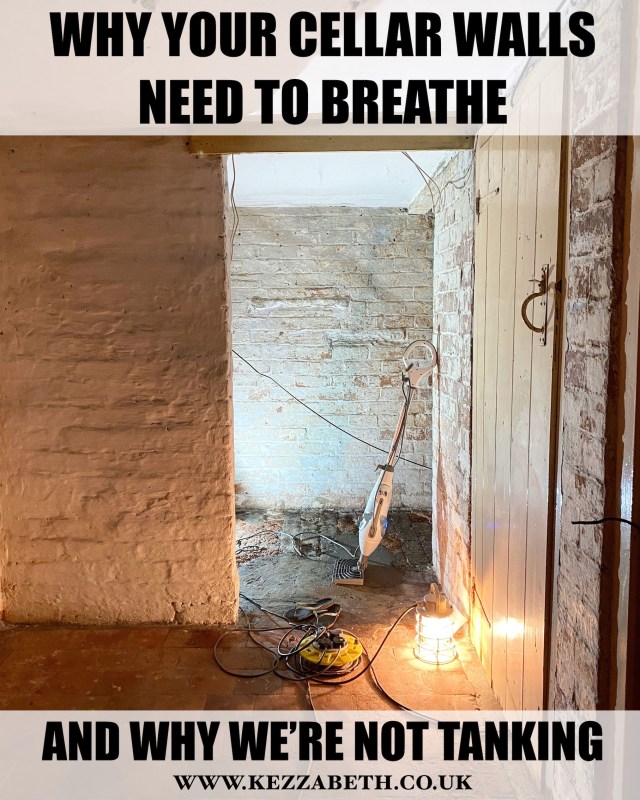Renovations in our old victorian basement cellar have begun, and although it’s very slow progress, this is a project I’m so excited to develop! So far, we’ve stripped back the walls, opened up the fireplace and we’ve even added in a window.
We’ve made great headway, but we still have plenty left to achieve before it’s anywhere near usable down there. One question I’ve been asked a few times over the last few months is how we’ll be tanking/damp-proofing the basement.
The answer is, we’re not. So I thought I would write a post and explain why.
Before I start though, I just wanted to say that I am certainly NO expert when it comes to buildings or building work in general. However, there is A LOT of free advice on the internet (not all good advice, I might add!!) and lots of different platforms you can learn from.
About 7/8 years ago when we were in the process of selling our previous home, my eyes were opened around the questionable work within the damp-proofing industry. I spent hours reading information from experts and watching YouTube videos calling out damp-proofing techniques that just don’t work in period homes.
I know this may all sound like a bit of a conspiracy theory against damp-proofing – but I’m going to share what I’ve learnt over the years and hopefully, it will at least make you think twice about certain techniques and to weigh up the different opinions before jumping down the “we need to damp-proof X-Y-Z” route.
I’ve also linked some great sources at the end of this post where you can find more information about damp/breathability in old homes.
Period Houses are Made with Different Materials
Not all buildings are built the same way. You’ve seen cottages built in a collection of various sized local stones right? And you can tell the difference between period bricks and modern bricks? These materials are all slightly different. A bit like card, paper and kitchen roll, so to speak. Same same, but different.
Some bricks are softer than others and likewise, some mortars are softer than others too. Yes, it’s all mortar and it all holds your house together, but the exact ingredients and ratios might be different.
In period buildings, traditionally when it was built, the mortar was made from lime. As was the plaster, any exterior renders and even the paint. All lime-based products! And what makes lime special? It’s porous, making it breathable.
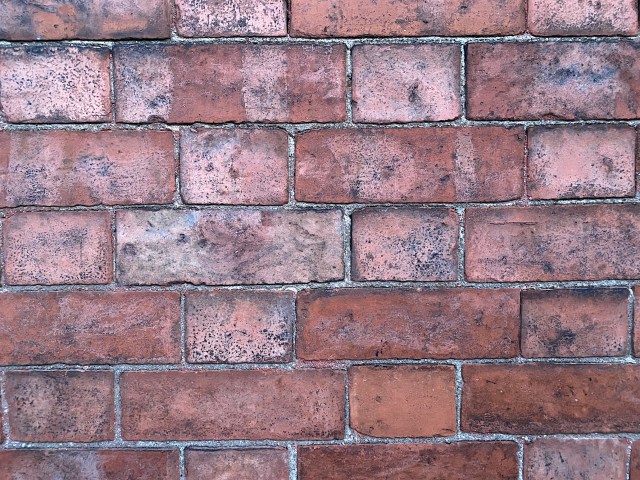
Breathability in Period Buildings
When victorian houses were built, they were designed for that era. They had chimneys to house coal fires to keep the house warm, cool cellars for storing food and even the single glazed draughty windows provided the ventilation a house needed. What seems like poor choices in a world of modern technology, was probably once upon a time, clever design ideas.
And that breathable lime I was talking about? It allowed moisture IN and OUT of the building structure. Whether that’s in liquid form, or as gas, it meant there was a balance of intake and evaporation. A natural equilibrium and the ability for buildings to “breathe”.
To put this into context for you, it would mean any internal moisture from drying clothes or cooking, for example, would penetrate the lime plaster and then simply evaporate back out. External moisture too, such as from rain would do the same. It would enter the lime mortar (or render) and then evaporate right back out.
Those draughty windows and warm coal fireplaces acted in favour of this natural drying cycle and because of these breathable materials, water was never trapped within the building. Which meant, these old buildings did not typically have damp problems.
Any moisture within the building had an escape route.
The Problem with Modern Cement, Gypsum Plaster and Damp Proofing Paints on Period Buildings
Modern houses are built very differently from period buildings. They’re built with much harder bricks, they’re designed to be waterproof, highly insulated and with zero draughts. Basically, the exact opposite!
The materials they’re built with, like cement, prevent moisture from getting in or out and are NON-breathable. In theory, this may sound great, BUT when combined with period materials or within a period home, it simply doesn’t work and instead, traps moisture within the building.
Remember I said some bricks are softer than others? If you replace lime mortar with a cement mortar, not only will you be trapping that moisture within the building itself (as it no longer has an escape route), but it will also cause those softer bricks to deteriorate. You’ll often see this where the face of brick has crumbled away (known as spalling).
Similarly, if you cover lime mortared bricks with gypsum plaster or certain modern paints, (like weatherproof masonry paint which is non-breathable), you’re disrupting that same natural balance and again, trapping moisture.
These materials simply weren’t designed for old buildings and don’t work well when used with traditional materials.
Check out this video to see a real example of the effect of cement on period bricks.
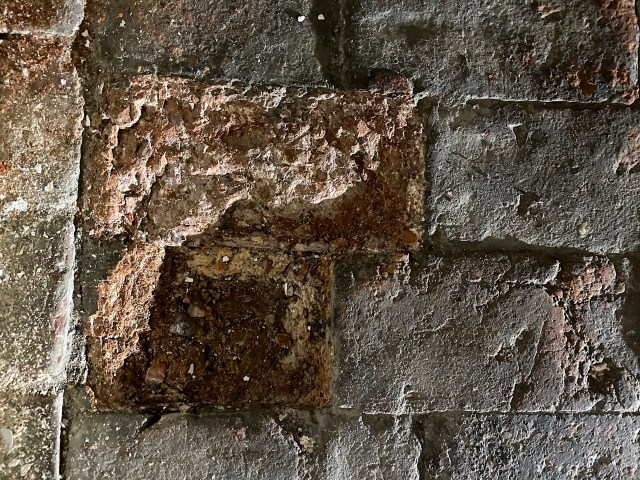
What Does Trapped Moisture Lead To?
So I’ve given you a couple of examples already, but let’s break it down further:
Damp Patches
Where moisture cannot escape, you’ll find damp patches. This might be from condensation within the home or water trapped on the outside of the home. Where it would once upon a time have simply evaporated away, it’s now stuck within the very fabric of the building.
Peeling Paints
Many modern paints are also non-breathable. Ever seen a Victorian house covered externally in peeling paint? When moisture wants to get out, it will find any possible way to get out. In time, the paint will flake and peel away from the surface. This is a particular problem with masonry paint.
Spalling Brickwork
One of the worse effects of trapped moisture is spalling bricks. As I mentioned previously, this is when a brick is deteriorating. Usually, the face of the brick will burst off and eventually, the whole brick will crumble.
This often happens specifically when moisture within the brick freezes (and expands as doing so), therefore breaks the brick. Over time, spalling bricks allow more moisture to penetrate the brick, creating more problems. Eventually, these bricks need to be replaced and many over a large span can even become a structural issue.
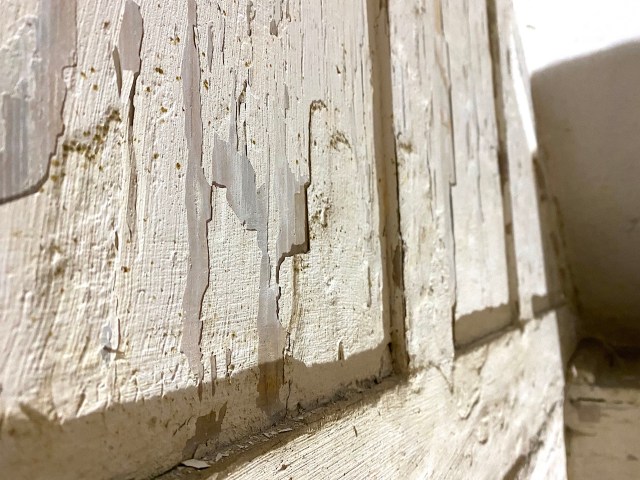
What About Damp-Proofing Treatments?
There is a vast amount of different damp proofing treatments available and each work in different ways, but essentially, they act to prevent moisture from entering a building. However, if you’ve read the above, you’ll know this has a similar effect as cement and doesn’t FIX the issue, it simply traps water, or masks over it until the moisture can find a new route to escape.
Many believe the whole damp proofing industry is a con and I’ve read some debate that there is no such industry in certain countries across the world. Rising damp, in particular, in a greatly debated topic.
I could write a whole blog post on the topic, but there is evidence to suggest that many damp proofing treatments simply don’t work in period homes and that they weren’t required in the first place!
There are many reasons for damp, including the external ground being too high, leaking gutters or drains and of course, things like cement being used in period homes. These issues are often overlooked when damp-proofing is advised.
The Importance of Breathability In Basements and Cellars
If there was one place in your house which is GUARANTEED to have moisture within it – it’s probably going to be the basement or cellar. It’s underground after all.
So naturally, that moisture on the outside penetrates through to some extent. Your first thought might be “how can we STOP this moisture from getting in?” and more likely than not, your cellar or basement will have evidence of previous attempts at stopping it.
Maybe you have bitumen or another kind of damp proofing paint slathered across your walls? Or maybe it’s been concrete rendered? Maybe those draughty windows and the original coal hole have been blocked up?
Unfortunately, these methods have probably done very little to help the situation, and if anything, they’ve made it worse, simply trapping that moisture and saturating the brick, rather than allowing it to escape.
A big problem with a basement having moisture trapped within its walls, if that the basement is the very foundations of your home and dampness in a cellar can also lead to rotten floor joists in the rooms above too.
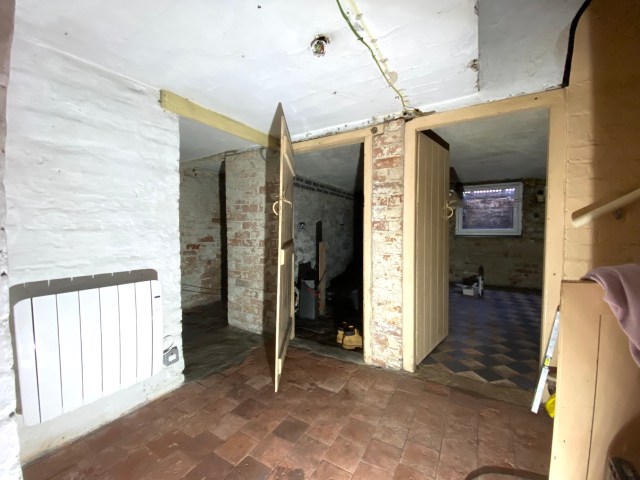
The Problem with Tanking
Tanking is a form of waterproofing and has many different forms. From liquid cement slurry which acts almost like render, to plastic sheet membranes forming a barrier around the wall, the list goes on.
The problem with all those methods? It still traps moisture within the walls. And the problem with being underground is that it’s almost like creating a swimming pool around the outside of your house.
Sure it may keep the damp from displaying itself in your basement for some amount of time, but the problem is, your house is now sat in that moisture. Eventually, the bricks will saturate in moisture, deteriorate, spall and crumble over the years. You may start to find damp patches in the rooms above as moisture fights its way out, destroying joists, timber floors and other woodwork in its route. And worst yet, that higher moisture level, in time, will simply make your basement wetter.
So What ARE We Doing to Prevent Damp in our Cellar?
Our plan is pretty simple. Instead of focussing on keeping moisture OUT, we plan to work WITH it, just as our home was originally built to do. This basically means putting the cellar back to the way it was built.
Remove ALL Non-Breathable Materials
You’ll know we’ve already removed as much waterproof coating as possible from our basement walls. This includes cement slurry, bitumen paint, masonry paint etc. This will allow the walls to breathe again and for the moisture to escape.
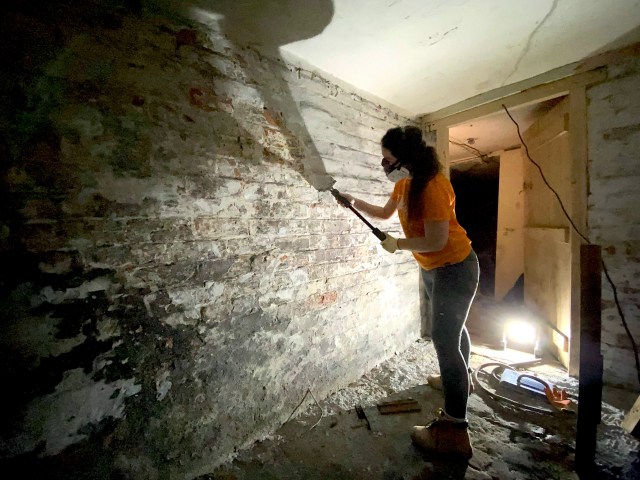
Improve Ventilation and Air Circulation
Ventilation and good airflow is key to keeping a basement dry. You’ll know our basement had ZERO ventilation and we’ve already tried to improve that slightly by reopening the bricked-up window and reopening the fireplace. This will allow fresh air into the basement and to some degree, the open fireplace will allow a route for air to move out of the basement.
This certainly isn’t fool-proof though and in an ideal world to improve circulation, we’d add a mechanical ventilation system to guarantee good air movement. At the moment, we’re not doing this – but we’re mindful of this being an option should we encounter moisture issues.
It’s worth noting that adding a load of external vents does very little for damp, it simply allows cold air in. Ventilating a basement and then circulating that air is two separate issues.
We could also add vents in the floorboards of the rooms above (nice decorative ones of course!), but again, this is something we’ll consider down the line should we need it.
Install a Dehumidifier and Radiators
On top of ventilating and circulating, we’ll also be adding a dehumidifier to collect excess moisture (again, this will allow us to manage moisture rather than prevent it) and some radiators too. This will replace cold air with warm air, which is also a key element for keeping a basement or cellar dry.
You can get mechanical ventilation systems which will warm cold air at the same time as removing moisture and providing air flow, however, these systems are quite pricey, so for now, we’ll just be using radiators and a dehumidifier.
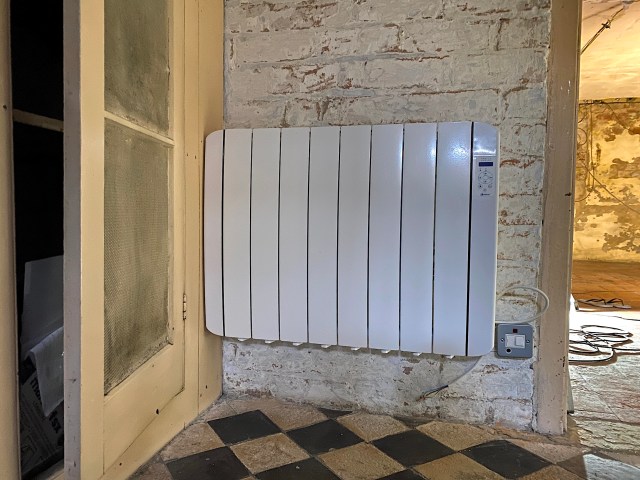
Use ONLY Breathable Materials
Finally, we’ll be using traditional breathable materials, such as lime mortar, lime paster, quarry tiles (made from clay and are breathable), lime wash and/or clay paint. All of which will allow moisture in/out.
Will that make our basement dry? Hopefully, yes – it’s all a bit of trial and error, but we’ll certainly find out and I’ll keep you posted!
I know some houses which have a serious damp problem in their cellar basements often use additional pumps/drainage systems to manage moisture, but debatably amongst many experts, tanking should very rarely ever be required.
Word of Caution Around the Word “Breathable”
The last thing I wanted to mention on this post, is that I highly recommend thoroughly researching any products you find which claim to be “breathable”.
The problem is, as more people are understanding the need for breathability within period homes, more companies are launching “breathable” products. Great, you’d think! Except, HOW MUCH a product is breathable may greatly vary.
Imagine buying a ‘pork’ sausage, which is only made up of 5% pork. If the sale of meat was unregulated, it could claim to be pork even with just 5%. But compared to a 95% pork sausage, it’s not really a match, is it?
Some breathable products are just like that. According to experts, the term ‘breathable’ is currently unregulated and HOW MUCH a product is truly breathable may greatly differ. A product that claims to be “breathable” may not be nearly breathable enough.
My advice is to research well, find reviews and invest in longstanding reputable brands known for their traditional materials.
For more information, please read this in-depth article.
Read What The Experts Have To Say…
So there you have it. Everything I’ve learnt about period buildings and breathability over the years. Don’t take my word for it though, check out some of these sources for more information/advice on damp and traditional lime products:
- Peter Ward YouTube Channel (This is a FANTASTIC place to start with educational videos and lots of scientific research behind ‘damp’ in old buildings) This video in particular covers cellars and how to keep them dry.
- Heritage House – If you want to hire Peter (as mentioned above) to survey your damp problems, this is the website to go. There are also lots of written articles and advice to follow on there about all kinds of different building works on older homes.
- GreenSpec – Another great website with advice around insulation, ventilation, damp and maintenance of old buildings.
- Mike Wye – Lots of great videos for DIYers if you want to learn how to use lime based products!
- Lime Green – More articles, videos and information on all things ‘lime’.
- Cornish Lime – Recommended to me by an Instagram Follower (thank you @house_on_the_border!) this company sells lime products, has great online articles and even offers training days if you want to learn how to DIY with lime.
- Earthborn Clay Paints – Clay paint is breathable and comes highly recommended for use with lime-based products. Check out their blog for more information!
- Linseed Paint – Linseed paint is recommended for preventing trapped moisture within woodwork which may contribute to rot. Particularly, this is recommended for external woods which many would use “waterproof” coatings.
A Little Roundup
Well this turned out to be one LENGTHY post didn’t it?! I hope I haven’t rambled too much and you can make sense of my poor written skills. If you have any information, advice, articles, experts you’d like to share – please do leave them in the comments below for others to see/read.
As I said at the beginning, my opinions and knowledge on this topic has come from research and learning through others (namely those mentioned above!) – I certainly don’t claim to be an expert, but I do want to use this little space on the web to talk about this topic of breathability and hopefully help you find information for advice for your own renovations.
So I hope this was helpful and please do share anything extra you have to add below!
